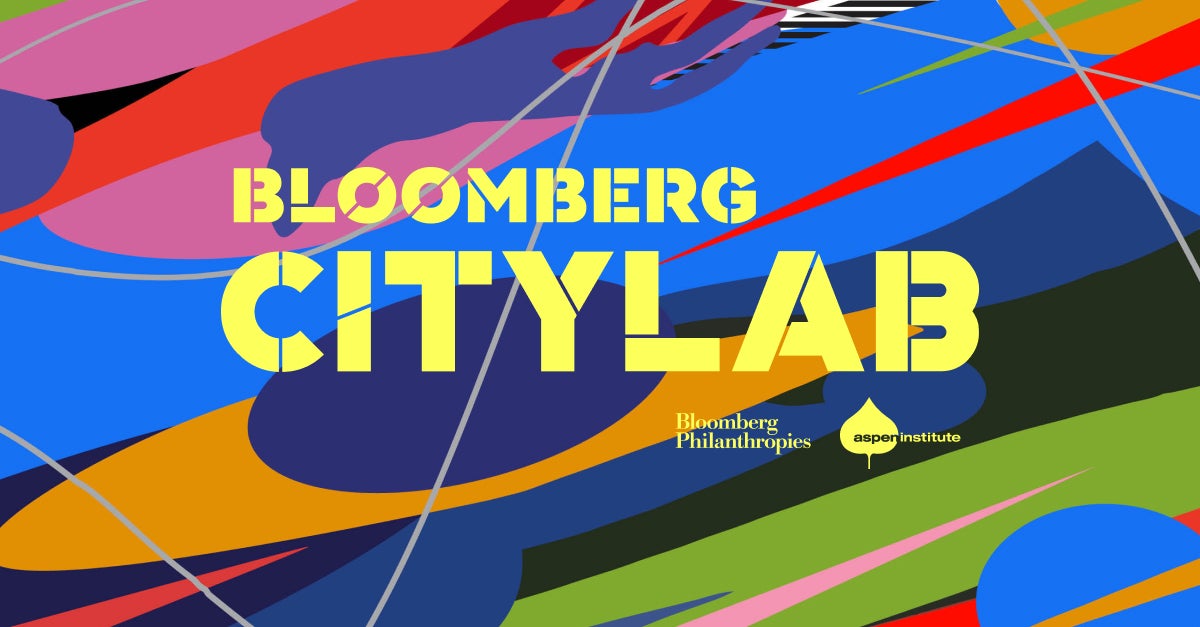Aspen Institute President and CEO Dan Porterfield delivered welcoming remarks at “The Future of Cities: Connecting Innovation, Equity, and Empowerment,” hosted by the Center for Urban Innovation at the Aspen Institute on April 9, 2019 in Washington, DC. Follow him on Twitter @DanPorterfield.
Thank you, Jennifer, for that kind introduction and for your leadership at the Aspen Institute and the Center for Urban Innovation, which is providing a hub for future-oriented urbanists working to build a better society.
Thank you also to our colleagues at the Centre for Public Impact and Boston Consulting Group for your leadership and partnership which has been so valuable in producing this instructive handbook, “The Future of Cities: Connecting Innovation, Equity, and Empowerment,” which is a call to arms to ensure that legitimacy, equity, and agility power today’s urban innovation and, more broadly, the new localism so important if we are to restore confidence among our many publics that people actually have control over their lives.
The Aspen Institute is dedicated to creating a free, just, and equitable society. Cities—home today to 80 percent of Americans—are crucial to that timeless vision.
Decisions about how to incorporate artificial intelligence into urban transit systems must be driven by the imperatives of equity and community legitimacy.
Decisions backed by data analytics can help support a city that espouses justice—one where no one is disadvantaged because of race, gender, sexual orientation, income-level, or geography.
And every day, our public servants make difficult decisions that balance personal freedom and community security in a world where technology challenges and shifts the relationship between the two every day.
This “Future of U.S. Cities” handbook reminds us that equity and legitimacy are not by definition in the DNA of innovation unless we make it so.
Again and again in our careers we have seen how changes in technology or the implementation of new innovations happens faster than the broader public’s engagement in the changes happening not with them but to them. The development of nuclear technology is one of the iconic examples: we had the technology to destroy the work before we had an ethical framework to understand and perhaps limit those technologies in the first place. More recently, we’ve seen it with the rise of the digital communications revolution. Some saw the birth of the Internet as the blooming of utopia—open access to all, the democratic availability of information and knowledge, a new platform for personal expression and community experience. It turns out that the story is more complex and there is a good deal of anger among many citizens for the unintended consequences of opening Pandora’s box.
Personally, I see the critical importance of community engagement and change-making through the tangled story of education reform in American over the last 10-15 years. It doesn’t make sense to me that parents and students sit confused as polarizing debates rage around them about whether or not, for example, charter schools and new forms of assessment are beacons of a democratic future in which the citizens are educated for flourishing or if they reflect special interests, business practices, and the privatization, for the good of some but not all, of the public imperative to educate all equally.
Jennifer’s work reminds us that we need a hub in order to bring together, inclusively, changemakers and the communities they would change for a genuine dialogue about shared values and shared purposes. If we don’t have all stakeholders at the table to co-create the future that we seek, to ensure that our innovations serve equity and are respected by all stakeholders for the legitimacy of the processes that develop them, we will find our new creations may increase efficiency, perhaps, but drive people apart.
Efficiency by itself is joyless. Efficiency and innovation in the service of the public good, and a free, just, and equitable society is work worth doing.
This “Future of U.S. Cities” handbook and the collaborative work that went into it encapsulates so well what I’ve love about the Aspen Institute.
We are bringing together many partners and thinking through how best to work inclusively, creatively, and optimistically.
We are focused on the future, which means we are looking to improve structures and systems to promote more equity, opportunity, and access for our young people.
And at the center of everything, we are focused on people—their stories, their struggles, and their successes. We strive every day to improve the human condition everywhere, in the United States and around the world. Listening to and learning with all of a city’s citizens the direction to move where we need to be and the information and partnership that will make that journey successful.
This handbook helps us to do that and, importantly, it also creates opportunities to give feedback that will determine where this research goes next. The ink may be dry, but the work goes on.
So, I’m very excited that the Aspen Institute’s Center for Urban Innovation and The Centre for Public Impact are elevating examples of city governments that are deploying innovative technologies and processes in the service of timeless values. That is an essential, exciting connection to make. It’s what we try to do here at the Aspen Institute, and what you in this room pursue every day.
Thank you for being here to today to learn, teach, and connect—and thank you for all you to do make cities free, just, and equitable communities for so many Americans.

